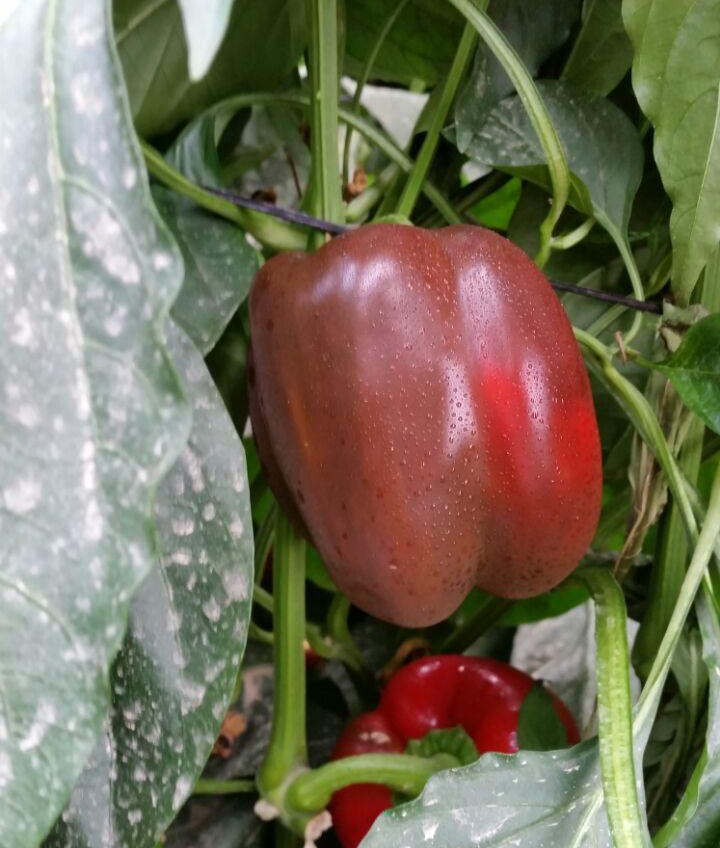Humidity is a critical factor in cannabis cultivation, one that is much discussed but also often misunderstood. It's about time we set the facts straight. DryGair explains...

Hadar Fuchs-Rubal | Yanor Yazma | Rom Meir
The following is an article produced by a contributing author. Growers Network does not endorse nor evaluate the claims of our contributors, nor do they influence our editorial process. We thank our contributors for their time and effort so we can continue our exclusive Growers Spotlight service.
We want to help you keep your buds dry and healthy, so this article may be a bit long-winded. Take a deep breath, but don’t sweat. Or condense.
WHAT IS HUMIDITY?
Air is comprised of many different gases, one of which is water vapor - the gaseous form of water. The amount of water vapor in the air can measured via relative humidity (RH). This is basically the amount of water vapor in the air, as a percentage of the amount of water the air can contain.

RH is determined by two factors: the amount of water vapor in the air and the air temperature. With this in mind, we can understand the importance of relative humidity in a growing facility.
WHY DO WE NEED TO MAINTAIN A CERTAIN RELATIVE HUMIDITY LEVEL?
Humidity is a major factor in the cannabis industry due to the dreaded Botrytis, a moisture loving fungus, most commonly known as "bud rot", elsewhere referred to as gray mold.
Humidity control means bud rot prevention. That's the bottom line.
Due to the dense nature of the cannabis bud, it's highly susceptible to a build-up in humidity. This is because plants are their own internal humidifiers, continuously emitting water vapor through their leaves. In cannabis buds, this internal humidification is amplified because the buds themselves contain leaves, commonly referred to as "sugar leaves". Because the bud is dense, this humidity gets trapped in the air contained within and around the bud.
While humidity is water vapor in the air, the real enemy is liquid water on the plant, because Botrytis needs liquid water to prosper. As temperatures vary between day and night, and different places around a grow change in temperature, water will condense on cold surfaces. And this is the tricky part, as the plant itself may be the cold surface! Plants transpire as they cool themselves off, sort of like sweating, rendering them colder than their immediate environment. The humidity inside a dense bud will condense on cold surfaces, creating liquid water that is great for mold and a major concern for growers.
To better understand the relationship between humidity and air temperature, we should take a look at the dew point.
DEW POINT – THE KEY TO CONDENSATION PREVENTION
The dew point is the point at which air becomes saturated with water vapor, forcing the water to condense out of the air, from a gas into a liquid. Basically, it's the point at which temperature has dropped enough to force water to appear out of thin air (literally).

This may not seem intuitive because water vapor is invisible, so we'll use an everyday life example:
When you pour a cold drink into a glass, you'll notice water forming on the outside. This happens because the cold drink lowers the temperature of the glass, pushing it beyond the dew point. The water vapor from the ambient air condenses onto the outside surface of the glass and that’s where you get the formation of water droplets.
This is the basic concept. The dew point is the temperature at which water vapor in the air (humidity) turns into liquid water.
HOW IT WORKS
Temperature and relative humidity are intertwined. It's easy to think of air as a sponge in this scenario; it contains water up to a certain point and once it is full, water begins to appear (or condense). If the temperature is constant, we can reduce the relative humidity by removing water vapor from the air. This would stop the appearance of water.
But when temperature changes, the size of the sponge changes. If we continue the analogy, hotter air means a bigger sponge, and colder air means a smaller sponge. As a result, the amount of water in the sponge remains the same, but the relative amount changes. Likewise, hotter air can contain more water than colder air can. When temperatures rise, relative humidity drops, reducing condensation. As such, water condensation can be managed and prevented through control of both humidity and temperature, such as with DryGair's dehumidification systems.
This is the important part - the dew point is basically a breakdown of this relationship. The following graph represents the dew point as a function of RH at a given air temperature:

This graph represents 70% RH. You may notice that at an air temperature of 70°F (X axis), the graph aligns with 60°F dew point temperature (Y axis). This means that if your greenhouse air is currently at 70% relative humidity at 70°F, you can go as low as 60°F before liquid water will appear in the greenhouse. If any surface in the growing facility reaches 60°F or below, water will condense onto it. Cooler surfaces are typically ceilings and walls, which have greater contact with the outdoors, metal pipes and railings, which can sit at different temperatures, or as we mentioned earlier, the plants themselves.
A SMARTER APPROACH
A combined approach, based on knowledge, allows us to do the minimum. We don't mean minimum care, we mean minimum cost.
Understanding what the dew point is and the factors that affect it provides us a better understanding of what's really going on in our operation. What really happens when we heat up, or allow the air to cool down. It's not just about temperature, it's about humidity as well and the dew point encapsulates this.
10 Best Gift Ideas for Cannabis Connoisseurs and Growing Aficionados (2022)
December 7, 2022Developing and Optimizing a Cannabis Cultivation System
December 14, 2021Dealing with Insomnia: How Can CBD Help?
December 10, 2020Your Guide to Sleep and CBD
December 7, 2020
Do you want to receive the next Grower's Spotlight as soon as it's available? Sign up below!
Resources:
- Want to get in touch with DryGair? They can be reached via the following methods:
- Website: https://www.drygair.com
- Phone: +972-9-7730980
- Email: info@drygair.com
- Want to read related articles by DryGair? Check these out:
- Want to read about similar articles? Check these out:

Do you have any questions or comments?

About the Authors
DryGair’s writers include a team of experienced engineers, agronomists, and economists. They specialize in climate control in closed growing facilities and practical solutions for effective climate management.